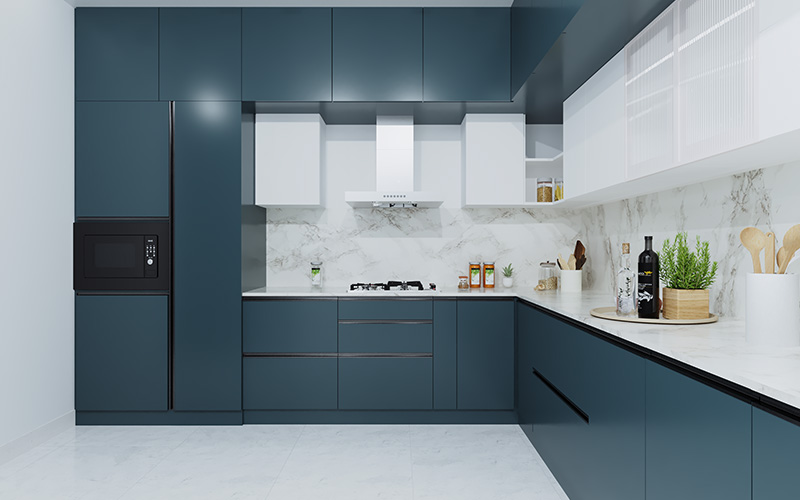Decorative Ideas to Beautify Your Balcony Garden in limited space
Contents
Containers for veggie gardening can transform these small outdoor spaces into a rich supply of fresh vegetables. Analyzing factors such as sunlight, space, and ventilation comes first. It is necessary to select the region of your balcony that receives the most sunlight.
Moreover, consider the wind conditions. Strong winds can damage plant leaves, so placing your plants in sheltered areas can protect them. Install wall planters, hanging pots, or tiered plant stands to achieve a striking appearance and maximize the use of vertical space when designing your outdoor balcony paint arrangement.
For its urban residents, Homzinterio designs sustainable gardening solutions and eco-friendly living. By encouraging the public to plant their food, they promote healthy organic practices and caring resources for compact gardening.
Vertical gardening techniques for growing vegetables
Vertical gardening is an expanding practice helping city dwellers to grow different kinds of plants, such as flowers, shrubs, and even small trees, on limited non-invasive balcony space. This novel approach transforms walls and fences into dramatic vertical gardens. One of the best approaches consists of using trellises which allow cucumbers and tomatoes, which normally sprawl outwards, to grow vertically instead. Planter walls and large buckets are ideal for trailing plants since they beautifully cascade down and are great for growing herbs and even sweet strawberries.
These vertical shelves, multi-level plant stands, enable us to be lighter while adding flexibility and style, the different heights are useful.
These approaches will be beneficial when an urban gardening paradise beautifies your home while encouraging a healthy lifestyle with fresh locally grown vegetables.
Cultivating edible crops in small spaces

One simple cool and practical way to indulge in urban gardening is growing edible plants in a limited space. To help manage space and resources, techniques like layering and intercropping can be used. Layering is growing crops at different vertical heights to capture more available space. Intercropping is planting a whole diaspora of plants in the same spot, to harness all that nature has to offer in terms of sunlight, water, and nutrients as a trick to maximize the use of such resources. One trick is to grow fast crops like radishes so there’ll be more open ground space for slower growers like tomatoes.
Another valuable approach is a technique called vertical gardening or layering plants at different levels, this works to make efficient use of height in the garden. Ideal for small balconies or patios and can easily be achieved with wall planters or tiered plant stands.
Fences, like other parts of the balcony, add further value to the balcony vegetable garden. The neglected spaces can be transformed into productive growth spaces with railing pots, trellises, and hanging planters. Herbs like basil, mint, and parsley grow beautifully in planter boxes near the fence. Plants like cherry tomatoes, beans, and peas grow well when set up high with some trellises or hanging pots. A wide range of edible crops, from leafy to root vegetables, can be grown using different containers to ensure continuous harvests from home.
Space-saving gardening ideas

Even if you’re trapped in the metropolis with hardly any outside room, you’re itching to get your hands dirty. Don’t let that balcony go unused! I’ve seen some incredible changes with just a few intelligent techniques.
Consider those folding planters; they are wonderful since you can tuck them away when not needed and pull them out when inspiration (or that seed package) hits. Stackable pots also totally revolutionize things. I have grown herbs and fruits like crazy in those things, all while keeping my valuable balcony floor space clear. Imagine trailing vines and brilliant blossoms rolling down; hanging baskets are another popular choice. It just makes everything feel so much more alive.
Naturally, a little balcony inspiration idea goes a long way. Saucers under pots always keep away from creating a watery mess. And a fast sweep once in a while gathers dropped leaves to keep everything pristine. Still, the self-watering pots are a life-saver if you are a little bit of a forgetful planter! Truly, even with a small balcony, you can grow some food and create a little green haven. Sniping fresh basil or a ripe tomato grown by oneself is hugely gratifying.
How to Water and Care for Plants in a Balcony Garden

Maintaining a flourishing balcony garden requires efficient irrigation and watering methods, particularly in small-scale gardening settings where water conservation is critical. Installing drip irrigation systems is one of the most effective ways to reduce evaporation and runoff by delivering water straight to your plants’ roots. These systems can be customized to meet the unique requirements of every plant, guaranteeing that they get the ideal amount of moisture. Watering cones, which may be fastened to bottles and enable a gradual, even discharge of water into the soil, can be a useful substitute for people without access to a tap.
Furthermore, using self-watering pots lowers the frequency of watering sessions by maintaining constant moisture levels. Plants with comparable water requirements should be grouped together to save water, and mulch should be used to keep the soil moist. Avoiding overwatering or underwatering can also be achieved by routinely monitoring soil moisture levels using techniques such as the knuckle test. You can also embrace sustainable gardening techniques that complement balcony gardening ideas.
Pest control in balcony gardens

In a balcony vegetable garden, controlling pests might be difficult, but companion planting and natural therapies provide efficient and sustainable solutions. Aphids, spider mites, and whiteflies can be managed using natural solutions like neem oil, insecticidal soap, and garlic spray that don’t damage beneficial insects or the plants. For example, garlic spray deters bugs with its potent scent, while neem oil interferes with the life cycle of numerous pests. Companion planting is another clever method of naturally repelling pests. For instance, basil placed next to tomatoes can keep flies and mosquitoes away, while marigolds can keep worms and aphids away. Herbs that grow well in pots, such as thyme and rosemary, are also great for repelling pests.
By increasing air circulation and lowering humidity levels, which are frequently favourable to insect growth, vertical gardening methods and effective space utilization can further improve pest control. Infestations can be stopped from spreading by routinely checking plants and manually removing any afflicted leaves or insects. In addition to protecting your plants, using these organic gardening techniques fosters a sustainable, healthy garden ecosystem.
Our expertise in urban gardening ensures that you can grow a variety of vegetables at home, even in limited spaces, while keeping pests at bay.










